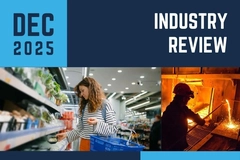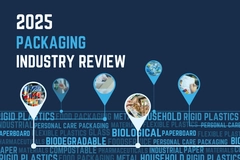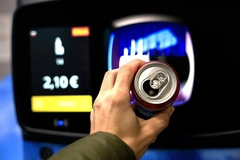Heraeus Infra-red Oven Helps More Efficient In-line Pasteurisation at Premier Foods

A custom-designed, carbon infra-red oven from Heraeus Noblelight is helping Premier Foods to achieve efficiency gains of more than 10% over a former hot rinse system on its cooking sauce production line at its Bury St Edmunds plant.
Premier Foods manufactures a wide portfolio of famous food products, from Batchelors soups and Bisto Gravy to Ambrosia custard and Branston pickle. The Bury St Edmunds site produces sweet pickles & relishes; a wide range of table sauces, branded & own label; and in particular, the important range of Loyd Grossman sauces. After cooking, the cooking sauce is pasteurised in-line and delivered to the jar filler at a temperature of +94ºC. This new set up saves a great amount of space and time by eliminating the need for a flat bed pasteuriser post bottling. However, there is always a danger of thermal shock, cracking or breakage of the jars, when filling glass containers, which is caused when the temperature difference between fluid and glass is too great. Previously, the cooking sauce jars were pre-heated in a rotary hot water rinse system. Here the gripped jars were injected with very hot rinse water, emptied and then fed to the filler machine. However, dwell times varied, with the result that the glass jars sometimes did not reach the temperature required to avoid thermal shock and breakages occurred. This meant that the line had repeated stoppages and delays.
To address this problem, Premier approached specialist conveyor system manufacturers, SFT-UK, who recommended that a Heraeus infra-red oven should be considered for the glass jar heating. Tests were carried out at Heraeus’s Neston Applications Centre and these proved the capability of medium wave infra-red in heating glass jars efficiently and effectively. Consequently, a124kW infra-red oven was installed on the production line immediately after a filtered air jar cleaner. This stainless steel oven is in two sections, one with four 24kW zones and one with two 13.8kW zones. An optical pyrometer measures the temperature of the jars as they leave the oven and this temperature is displayed on the front control panel. Manual or automatic control can be selected. In manual control, the operator can manually adjust the system’s power by means of a potentiometer to achieve the required temperature. In automatic control, the power is automatically regulated to maintain a pre-set jar exit temperature. All the infra-red emitters are fitted with failure detection so that the line is shut down in the unlikely event of emitter failure. If the line needs to be stopped for any reason, the carbon emitters switch off virtually instantaneously to prevent overheating of any jars in the oven.
Since installation, the new oven has proved a great success not only with production management in terms of less downtime, greater reliability and the 10% increase in line speed, but also with the workforce. As Stephen Ward, Project Manager at Premier, explains, “We have a notice board on the production line and the operators use this to highlight all their comments, both negative and positive. We were having a lot of negative comments about the old rinser. With the new infra-red oven, all the old complaints have been resolved and the workforce are now happy that, with the drastically reduced downtime, they can now consistently meet production targets, in a more comfortable environment.”
Heraeus specialises in the production and application of high quality energy sources covering the electro-magnetic spectrum from ultraviolet to infra-red. It has over 40 years experience in infra-red technology and offers the expertise, products and systems to provide efficient and effective solutions to drying, heating and curing problems throughout industry.
Source: Heraeus Noblelight










